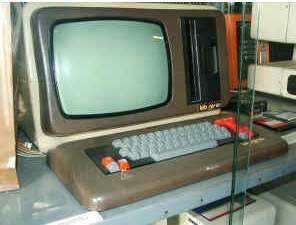Labsys 80 computers
Labor Műszeripari Művek (later Sci_L, a subsidiary of SzKI) – based on its experience in manufacturing a variety of electronic devices – announced this first (and only) successful computer in 1983.
Category:
Microcomputer
Technology:
High-density IC package
Origin:
domestic
Creation:
Own development
Developer:
Labor Instrumentation Works, Esztergom
Manufacturer:
Labor Instrumentation Works, Esztergom
Use
Operating time:
Release: 1983
Typical applications:
- Universal, intelligent control of laboratory and industrial instruments
- Measurement data collection
- Data processing
- Education
- Office applications
- Corporate data processing (inventory management, production management)
- Data preparation and preprocessing for mainframes
Year:
150 000 - 300 000 Ft
Available for viewing:
Hungarian Museum of Technology and Transport Technical Study Library,
1117 Budapest, Prielle Kornélia u. 10.
Structure
Central unit
Byte-organized machine: 8 bpB
- control unit:Intel 8080microprocessor, clock speed 2 MHz
- 16 bites címsín, 8 bites adatsín
- interrupt and DMA controller
- real-time clock
- main memory: 64-256 KB ferrite ring RAM
- calculator: ALU built into a microprocessor
- channel interfaces:
- two-line interface
- 48-bit parallel interface
Periphery
- backup:
- 8″ hard drive
- floppy disk (Intel 8271, Intel 8272, single or dual drive)
- external devices:
- keyboard
- graphic (CRT) monitor
Operation
Six of the seven 8-bit registers could operate as 8-bit or form three pairs of 16-bit registers.
Each instruction was 8 bits (including register addresses), and most of them were followed by one or two data bytes, which could be direct data (factor), main memory address, or gate address. Most instructions performed single-byte operations; in two-factor instructions, the second factor could be direct data, the contents of another 8-bit register, or a main memory byte addressed by a register pair (16 bits!). Data transfer was handled by MOV instructions, which made up a quarter of the entire instruction set.
The calculator could perform fixed-point addition and subtraction of binary and decimal numbers with 8-bit data; multiplication, division, and floating-point operations had to be programmed separately.
Program set
General programs
- operating system: MSYS (backwards compatible with Digital Research's CP/M 2.2)
- compiler: BASIC
Custom programs
n.a.
Historical curiosities
The hardware can be built modularly, from simple systems with a few cards to complex systems.
An important aspect in developing the machine was to create an acceptable service/price ratio.
Created: 2016.06.30. 22:57
Last modified: 2020.07.24. 12:04

